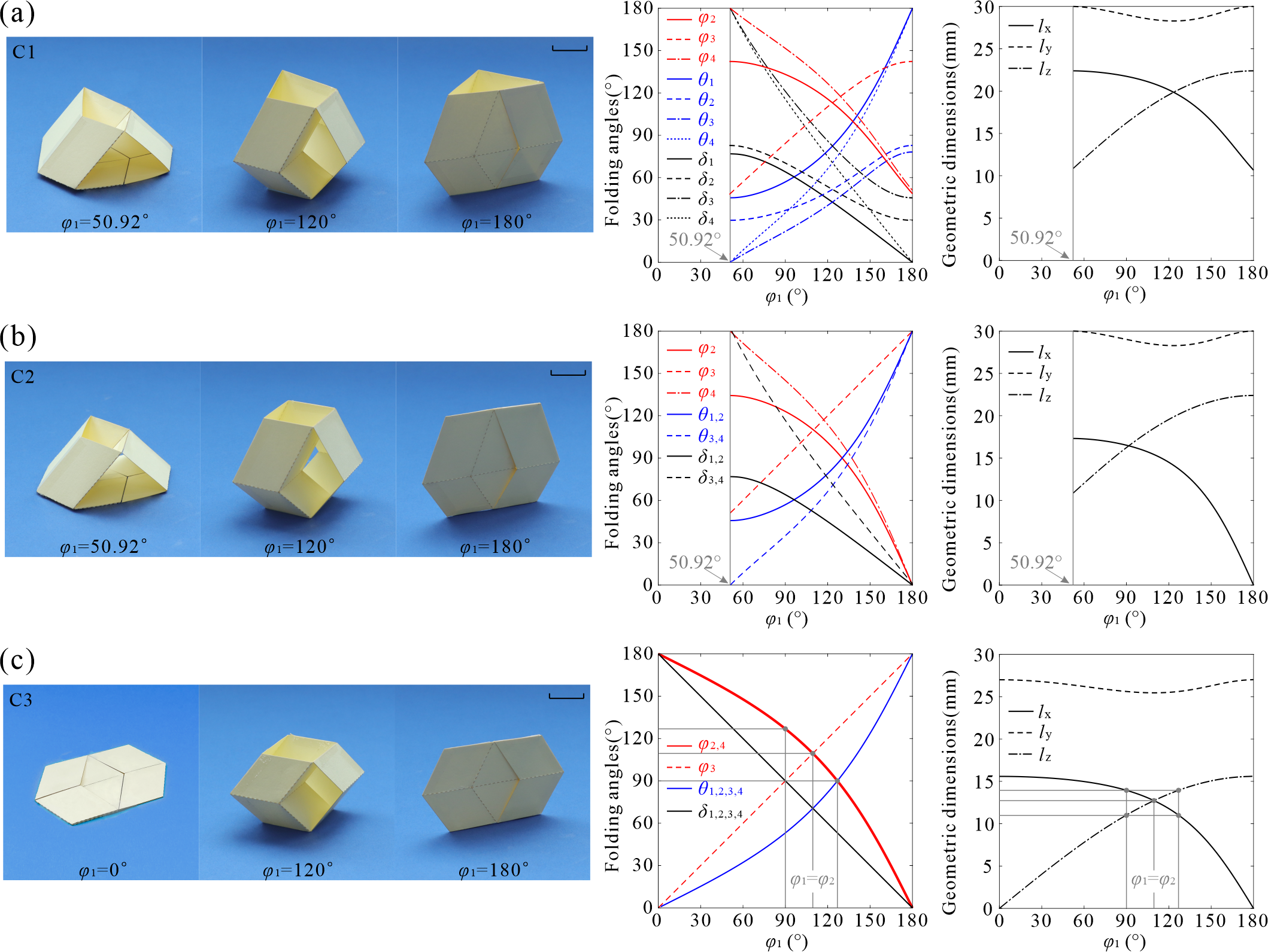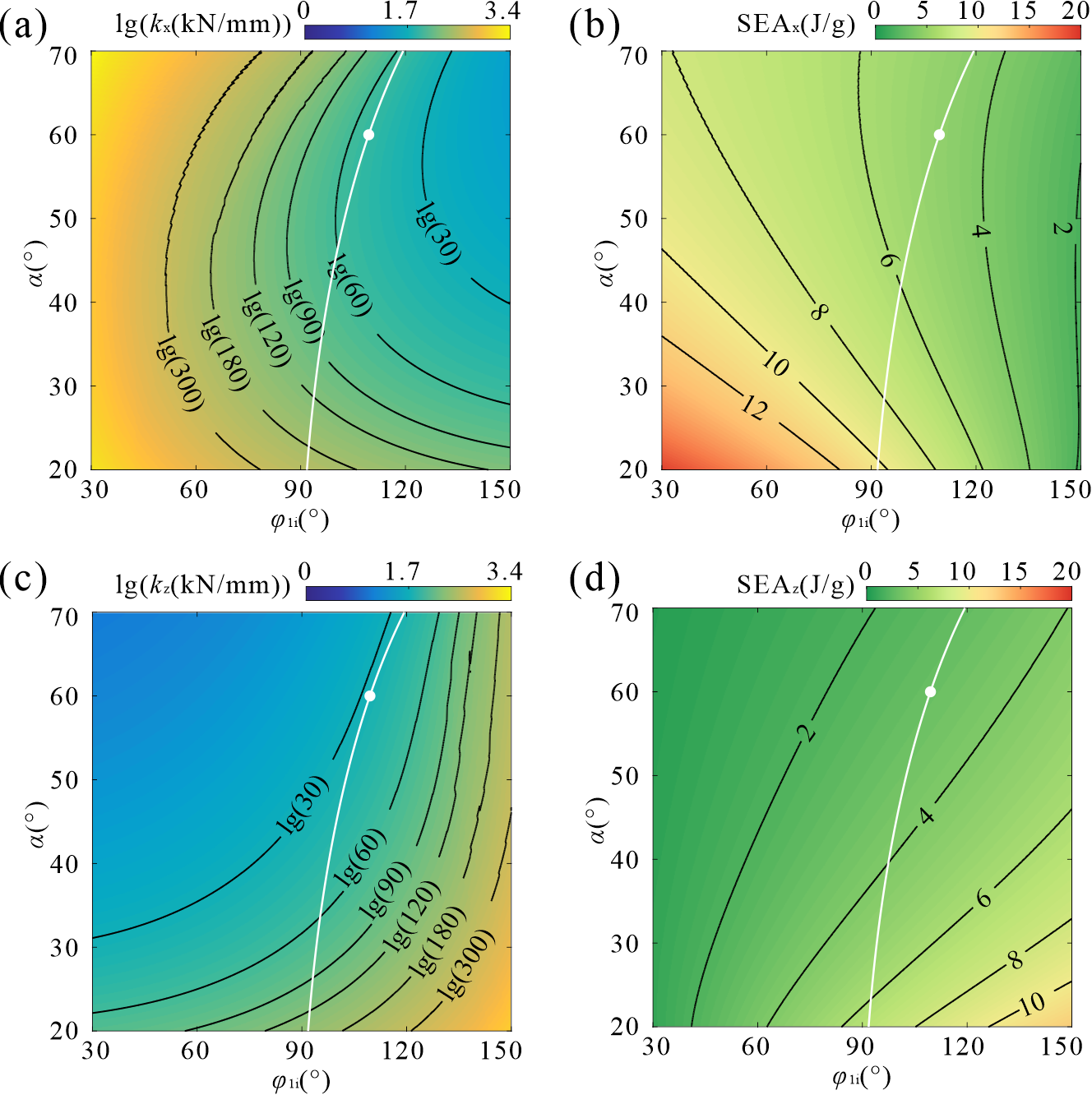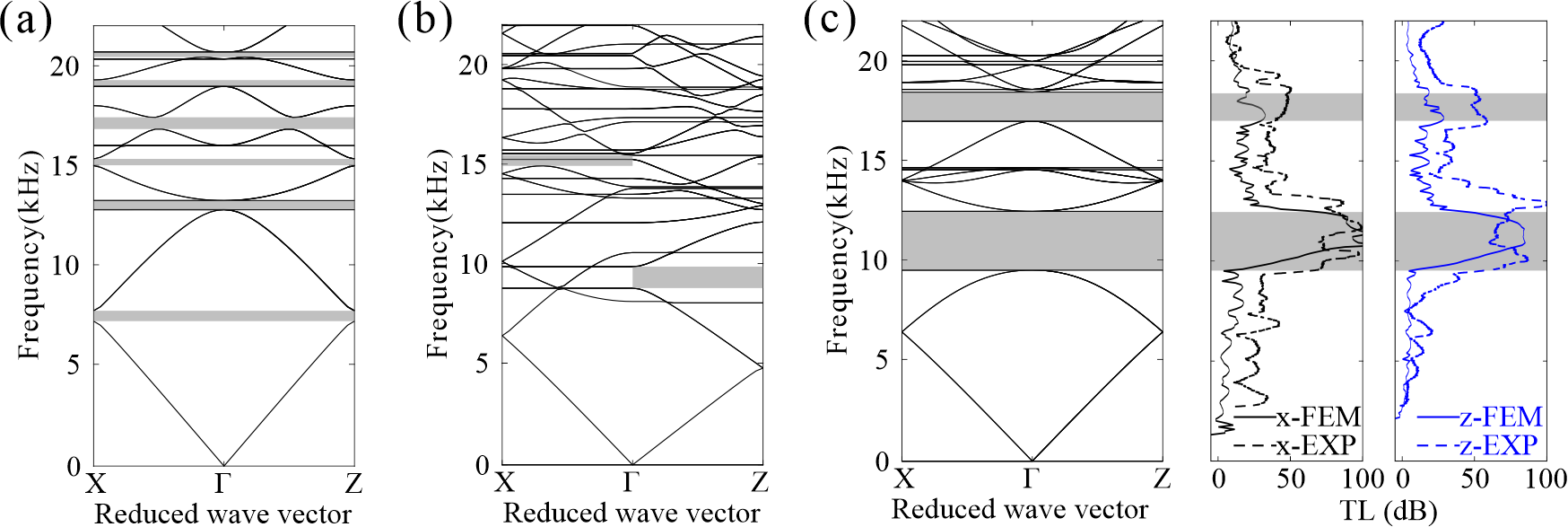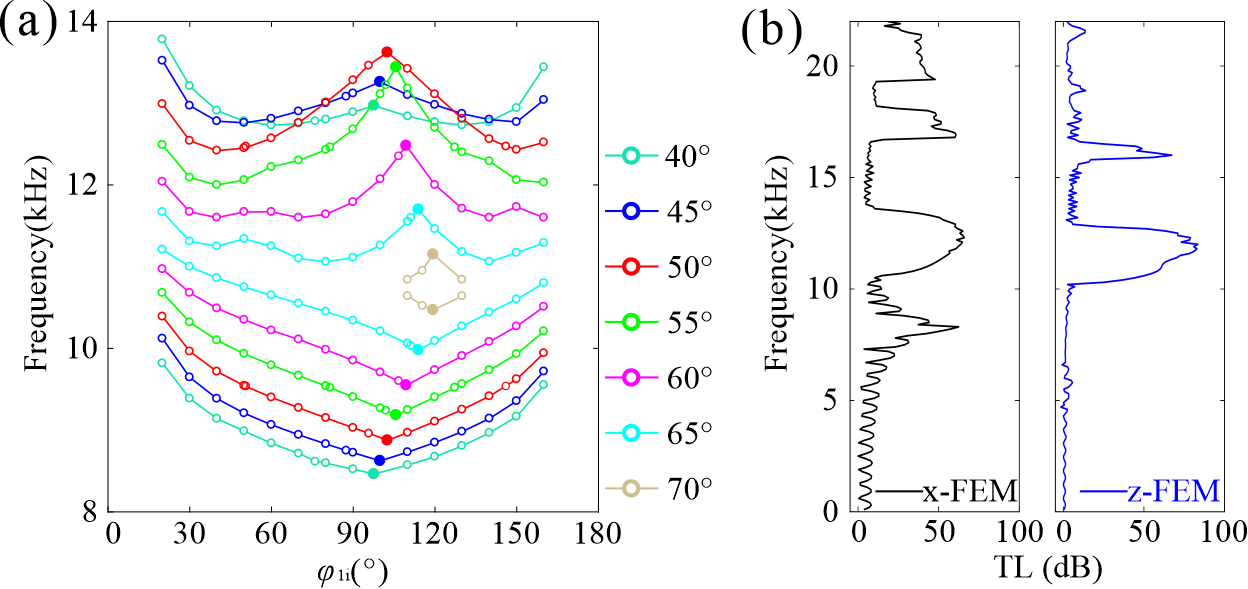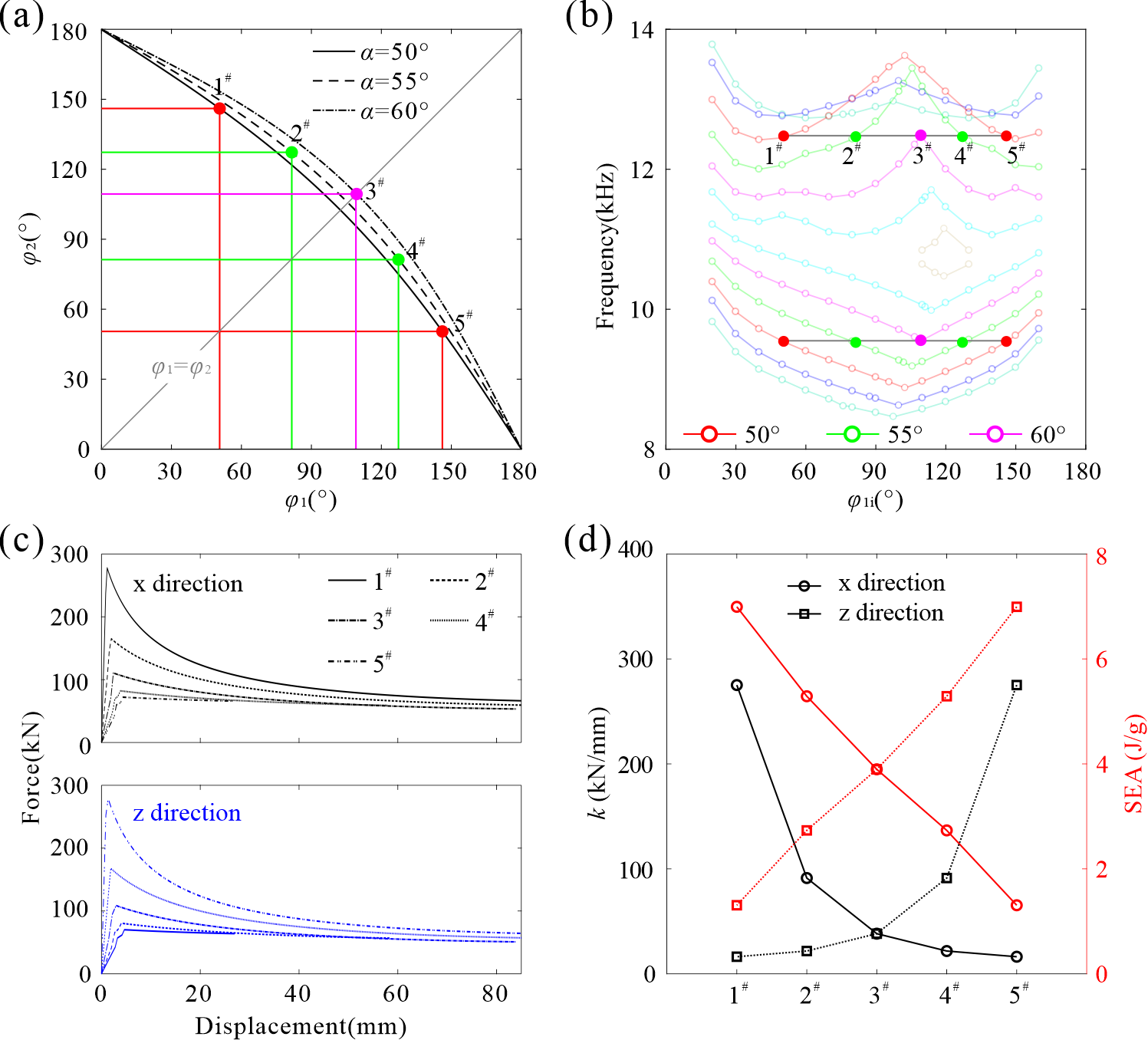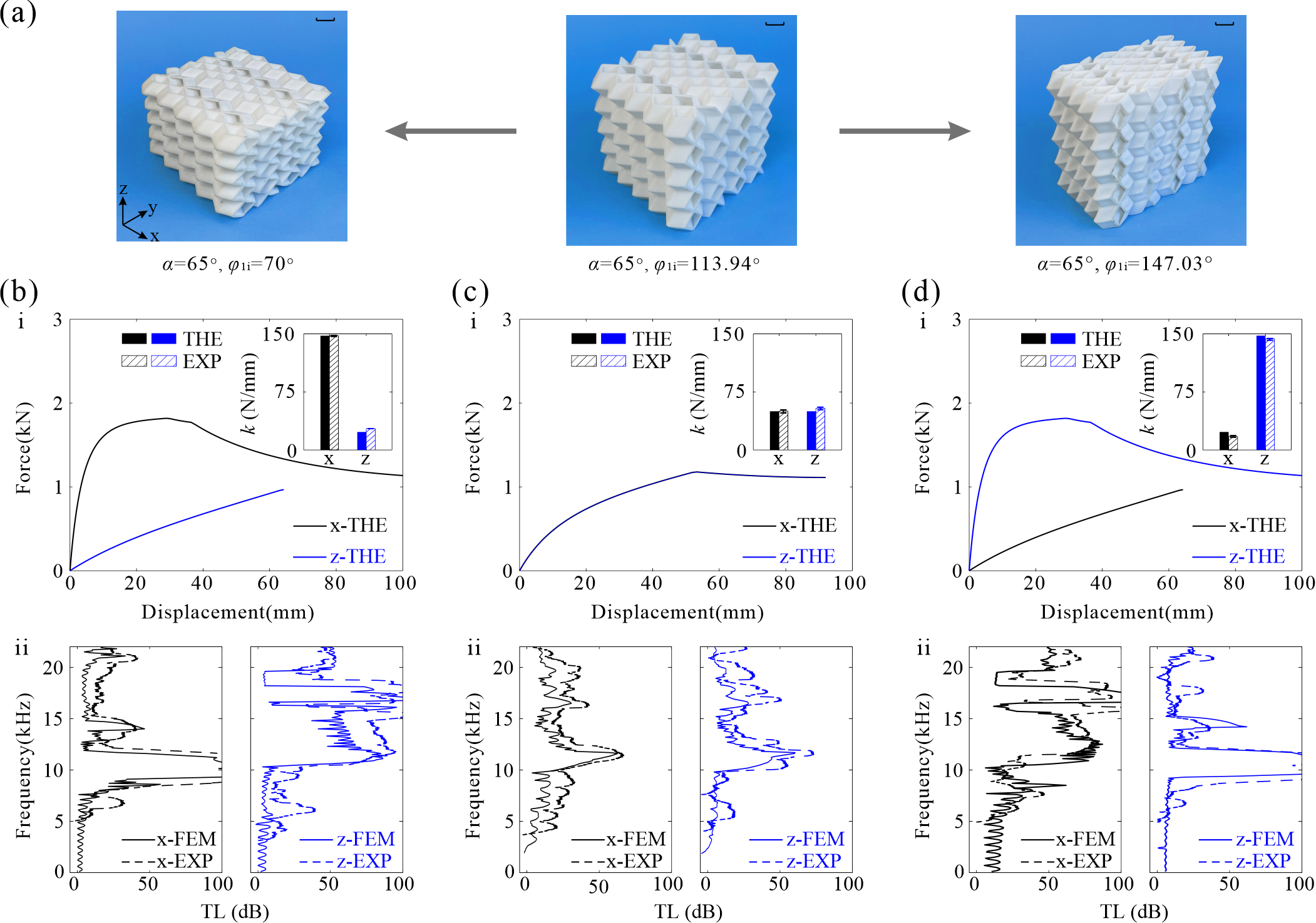Research
Team
Publications
News
|
New Publication: Composites Part B: Engineering | Mengyue Li published Double-tubular origami metamaterials with independently programmable and tunable mechanical and acoustic properties
From: Date: 2025-07-18 In fields such as aerospace, precision instruments, and high-end equipment, the demand for advanced material performance is increasingly complex. Ideal engineering materials must simultaneously possess superior mechanical properties and precisely programmable multi-physical functionalities (e.g., noise reduction, vibration damping). However, in conventional multifunctional metamaterials, mechanical and acoustic properties are typically governed by the same set of design parameters, making it impossible to program one property without altering the other. Existing decoupling solutions—such as structurally separating mechanical energy-absorbing units from acoustic resonant units—allow independent design-stage programming of these properties but lack post-fabrication reconfigurability and tunability, limiting their flexible deployment in complex scenarios. Addressing this challenge, the team of Prof. Yan Chen and Prof. Yan-Feng Wang at school of mechanical engineering of Tianjin University designed a single degree-of-freedom (DOF) double-tubular origami unit with unique orthogonal folding pathways. Utilizing non-unique mapping relationships between design parameters and physical properties, they successfully achieved independent programmability and tunability of mechanical (stiffness, specific energy absorption) and acoustic (bandgap frequency) performance. This work, titled Double-tubular origami metamaterials with independently programmable and tunable mechanical and acoustic properties, was published online on July 11, 2025, in the authoritative journal Composites Part B: Engineering. Co-corresponding authors are Prof. Yan-Feng Wang and Prof. Yan Chen; co-first authors are doctoral student Mengyue Li and Prof. Jiayao Ma. Doctoral student Xiao-Lei Tang also contributed. The research was supported by the National Natural Science Foundation of China and the Tencent Foundation (XPLORER PRIZE). Fig. 1 Double-tubular origami unit Fig. 2 Geometric and kinematic characteristics of C1-C3 units Fig. 3 Transposition characteristic of C3 unit
Video 1 Folding behavior of C1
Video 2 Folding behavior of C2
Video 3 Folding behavior of C3 Tessellating these units in 3D space (Fig. 4) forms the metamaterials MC1, MC2, and MC3. Finite element analysis and experiments characterized their quasi-static compression responses along the x- and z-axes. MC1 exhibited rigid origami folding mode followed by self-locking and panel buckling in both directions (Fig. 5a). MC2 showed stable rigid-folding plateau force along the x-direction but combined rigid origami folding and buckling in the z-direction (Fig. 5b). MC3 demonstrated rigid origami folding deformation in both directions (Fig. 5c). Fig. 4 Tessellation rule of the 3D metamaterial Fig. 5 Mechanical responses of MC1-MC3 metamaterials For MC3, a theoretical model based on elasto-plastic hinge assumptions accurately predicted stiffness (k) and specific energy absorption (SEA), with experimental errors below 2.5% (k) and 5.3% (SEA) (Fig. 5c). Parametric analysis showed kx and SEAx negatively correlate with initial folding angle φ1i and non-monotonically with sector angle α (Fig. 6a, b). Due to the inherent correlation between the folding states in the x and z directions, kz and SEAz trends oppose those along x direction. At φ1 = φ1 (white lines in Fig. 6), stiffness and SEA become identical in both directions. Fig. 6 Parametric analysis of stiffness and SEA of MC3 when changing design angle α and initial folding angle φ1i For the acoustic properties, geometrically symmetric MC1 and MC3 exhibit symmetric band structures with complete bandgaps (Fig. 7a, c), while asymmetric MC2 shows partial bandgaps (Fig. 7b). For MC3, the complete bandgap frequency range can be programmed over a 23.7-time range by varying φ1i and α (Fig. 8). Fig. 7 Band structures and bandgap properties of MC1–MC3 Fig. 8 Parametric analysis of the first complete bandgaps of MC3 with different design angle α and initial folding angle φ1i Critically, exploiting non-unique parameter-property mappings enabled independent programming. Configurations with identical z-direction stiffness (30 kN/mm, Fig. 9a) exhibited a 10.4-time variation in bandgap frequency range (Fig. 9b, c). Conversely, configurations sharing identical bandgaps (e.g., configurations 1#–5#, Fig. 10a, b) achieved 16.9-time stiffness and 5.4-time SEA programmability. Transposed configuration pairs (1# & 5#, 2# & 4#) swapped mechanical properties between x and z directions, while symmetric configuration 3# demonstrated identical responses in both directions (Fig. 10c, d). Fig. 9 Independent programmability of bandgap frequency range Fig. 10 Independent programmability of mechanical properties Using thermoplastic polyurethane (TPU), the team fabricated prototypes (Fig. 11a) and demonstrated post-fabrication property tunability via thermo-mechanical reconfiguration. Switching from symmetric (φ1i = 113.94°) to general (φ1i = 70°) or transposed (φ1i = 147.03°) states dramatically altered mechanical responses (force versus displacement curves, stiffness) and acoustic transmission loss profiles in orthogonal directions (Fig. 11b–d). Fig. 11 Geometric reconfiguration and properties tunability of the double-tubular origami metamaterial To conclude, this study presents double-tubular origami metamaterials that simultaneously exhibit mechanical and acoustic properties. By utilizing the non-unique mapping relationship between design parameters and physical properties, it achieves independent programmability of these dual functionalities. Combined with thermoplastic material-based reconfiguration, it enables post-fabrication geometric reconfiguration and property tunability of the metamaterials. This approach opens new avenues for developing next-generation smart engineering materials that integrate energy absorption, noise suppression, and dynamic adaptability.
Li M#, Ma J#, Tang X-L, Wang Y-F*, Chen Y*. Double-Tubular Origami Metamaterials with Independently Programmable and Tunable Mechanical and Acoustic Properties, Composites Part B: Engineering, 2025, 112804. |


